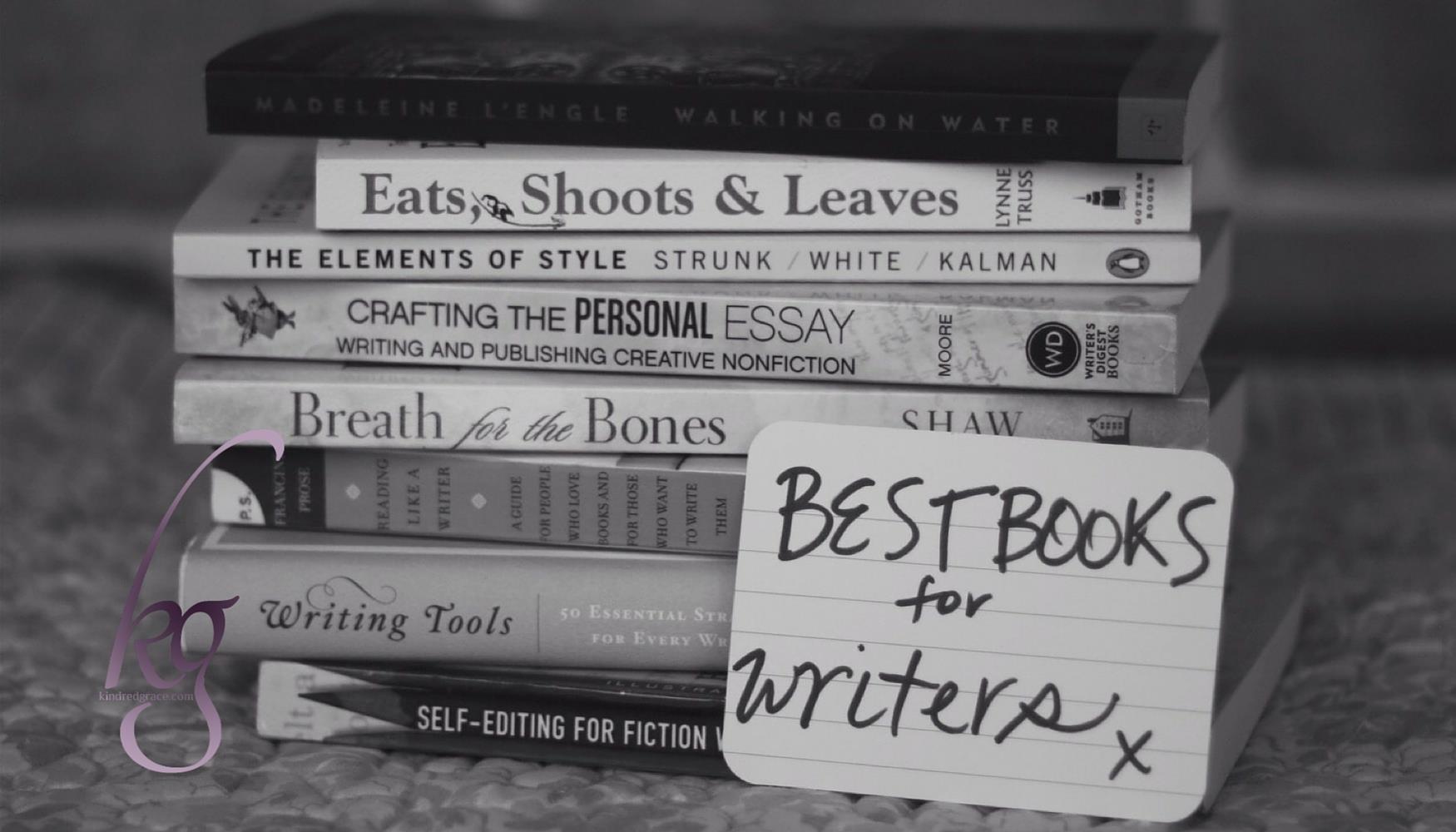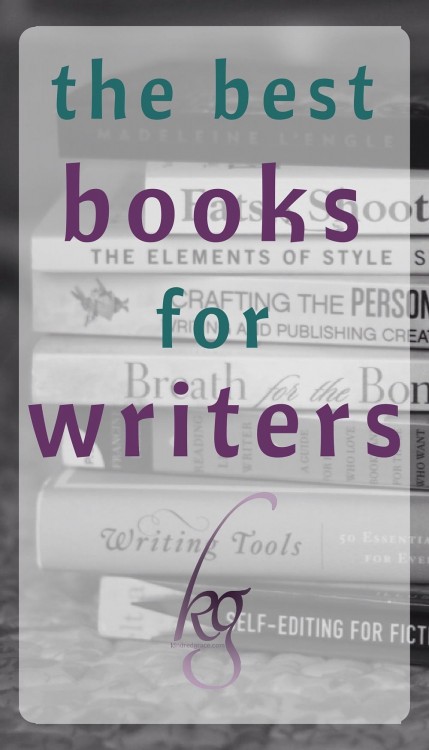the best books for writers
Disclosure: This post contains affiliate links which won’t change your price.
The only way to be a writer is to write. Pulling those words from the heart and mind and getting them onto the page is at once the simplest and the most difficult thing in the world. But reading can help us learn what good words in good order look like. It teaches us how to recognise the less-than-good stuff, too. And reading books specifically dedicated to the writing craft can be powerful motivation, inspiration, and education. Reading about writing can yank us out of slumps, remind us what we’re doing this for, teach us important aspects of the creative process, and hone our skills.
With that in mind, I want to share with you just a few of my favourite books for writers:
Roy Peter Clark’s Writing Tools fulfills both halves of William Morris’s stipulation to ‘have nothing in your houses that you do not know to be useful, or believe to be beautiful.’ The lovely hardcover, with its classic fonts and clean layout, is a delight to read and hold (and, okay, sniff; new book smell!). The fifty short chapters dive into the nuts and bolts of writing and provide a crisp primer on craft and construction, covering everything from sentence length to foreshadowing techniques, from narrative modes to artful simplicity. Good books about writing should also be written well, and this one ticks that box, too, being both readable and yet engaging, with lovely words, good conceptual illustrations, and exercises to help you put your fresh knowledge into practice.
Strunk and White’s Elements of Style has been popping up on writerly booklists for years. It’s a favourite handbook and style manual that succinctly covers the basics of fine prose, so it’s no surprise to find it so well-regarded. But did you know that the “White” of Strunk and White is the same EB White who wrote Charlotte’s Web and Stuart Little? And that it’s also an entertaining read in and of itself? It’s rare to find a non-fiction instructional book that genuinely delights in words, but this one does, even while it retains some traditional formality. My favourite edition of The Elements of Style also includes glorious and subtly funny illustrations by Maira Kalman. An illustrated grammar and style textbook? It’s just what the world needs.
Strunk & White’s text remind writers that editing and rewriting is one of the best ways to lift the quality and professionalism of the work. But it doesn’t always come naturally. Recognising that the first words to pour from your fingers aren’t always the best is the first step in learning to self-edit. The next step is finding the ability to examine your work critically and make the necessary changes. For most of us, editing looks a lot like checking the placement of commas and apostrophes, dotting those I’s and crossing the T’s, but it’s far more than that. Renni Browne and Dave King’s Self Editing for Fiction Writers provides a crash course on diving deep into the editing process. It teaches writers how to examine their own work at the broad, structural level, and then edit the very shape of it before diving into the tweaking of individual words and punctuation. It’s a very readable guide to self-education in the editing realm, and little exercises sprinkled throughout the text will a) provide immediate practice to put these tools into place, and b) appeal to the secret nerd inside us all.
Lynne Truss’s Eats Shoots and Leaves is a two-pronged wonder. On one level, it’s a book (a wickedly funny, snarky book) about punctuation: its rules, its power, and its pride. On another level altogether, it is tangible proof that if you write it well, you can make anything interesting. Who’d have thought of writing a comedy book about punctuation? Yet Lynne Truss did it, and did it superbly. In Eats Shoots and Leaves, you’ll laugh, you’ll learn more about the beauty of English grammar, and you’ll also discover what really good nonfiction looks like.
My copy of Dinty W. Moore’s Crafting the Personal Essay has tabs sticking out of it everywhere. As a writing guide, it’s that delicious mix of instructional and inspirational: it gives you the goods, but at the same time it makes you want to stop reading and pick up a pencil – which is just how it should be. Crafting the Personal Essay is a valuable resource for anyone who wants to put part of their life story into words, and should be particularly appealing to those who want to write about matters of faith. Moore dives into the motivation behind writing a personal essay, how to find ideas, latching onto the main concept, and polishing your work. But he also provides chapters on specific types of personal essay: memoir, lyric, spiritual, humorous, gastronomical, and so on. I suspect that, as you read this book, you will find yourself wanting to write at least one of each.
Francine Prose’s Reading Like A Writer is perhaps the loveliest book about books you’ll ever come across. It’s a celebration of delicious words, a paean to the power of language. But it’s also a guidebook instructing readers on how to read deeply, how to suck the marrow from great books and learn from their greatness. It’s a book about literary analysis, but it’s ever so much richer and more creative than that sounds. It will challenge you to read better. It’ll teach you how to get more from each book you invest yourself in so that you enjoy it as a reader, but learn from it as a writer. What’s more, it is, in itself, a book you will be able to read and reread.
For anyone who works as both a believer and an artist, it is unavoidable that questions will arise about the role of faith, belief, and inspiration in the creation of art. Writing – or creation of any kind – is intrinsically wrapped in identity, which is linked to who we are at the soul level. So beyond exploring mere craft, it’s important that writers also feed on books that explore the spirit of art, the link between worship, wonder, and words. Luci Shaw’s Breath for the Bones does this in a very gentle, accessible, yet visionary way. In particular, Breath for the Bones examines the meaning of inspiration, and reflects on how art links us to the world around us. Meanwhile, Madeleine L’Engle’s Walking on Water explores similar themes, with a rich philosophy that draws heavily on Christian history yet is also somehow deeply personal. In a way it’s a literary autobiography, and my copy is marked, underlined, and dog-eared everywhere. Both of these books move away from the how of writing to ponder the why of it, and make for compelling and thought-provoking reading.
These are just a few of my favourite books for writers, a handful of the ones I’ve dipped into repeatedly, the ones I turn to when I need a fresh vision for what I’m doing. What books would be on your list? Which of these have you read? And which ones would you push fiercely into the hands of your favourite hopeful writer and say, “Read them. You’ll thank me later.”?



Great list. I would “fiercely push” Walking on Water into the hands of a writer (unless they are writing). Others I’ve found indispensable include The Soul Tells a Story (Wright) and two standbys, Bird by Bird (Lamott) and On Writing (King).
I am putting many of these on my list and going to the library in hopes they have some. I need a good kick in the pants on writing. I got a bit sloppy for a few months and think some of these will help me. Thank you, Danielle!
I have a bunch of these and agree with your every word! Thanks for highlighting that about White–I had no idea!
Love this list. It gives me several titles to add to my wishlist!
Have you seen the children’s version of Eats, Shoots & Leaves? It’s priceless.
I loved Writing Tools. And that’s saying something because I’ve read almost every writing book in existence and pretty much hated them all (ha!) but for some reason that book connected with me, my writing style, and gave me so much to improve on!